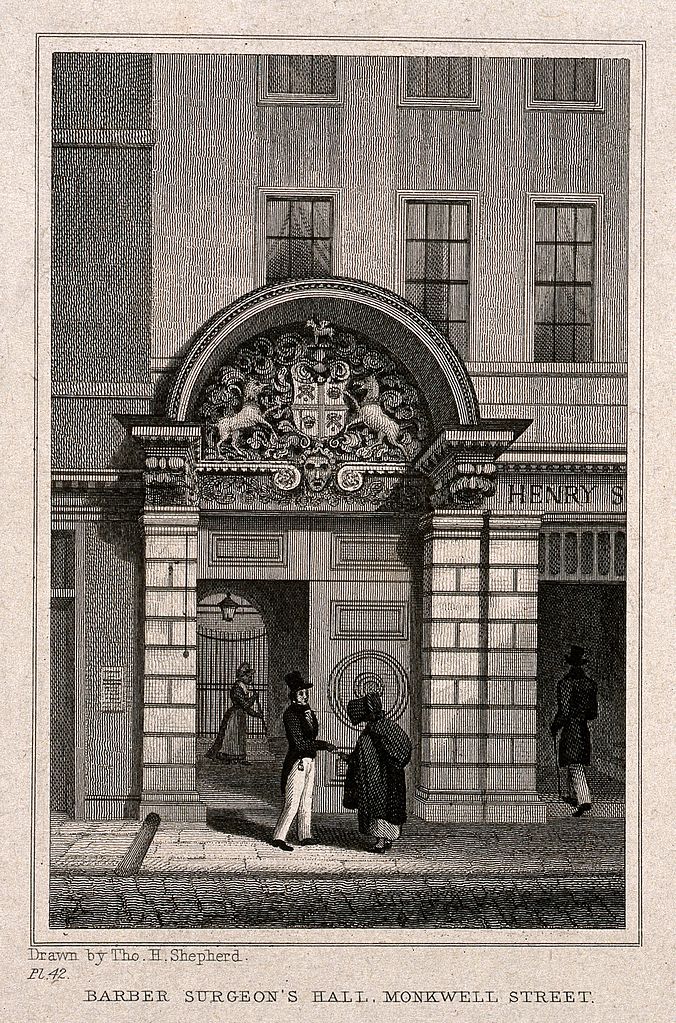The Barber-Surgeons’ Hall, originally situated on Monkwell Street in London, has a rich history dating back to the 16th century. Although the original hall was destroyed during World War II bombings, the current hall, located at Monkwell Square, stands as a testament to centuries of medical education and practice.
One of the hall’s notable features was its Great Hall, where public demonstrations of dissections took place four times a year following the licensing of dissection in 1540. These demonstrations were compulsory for all ‘free’ surgeons, and they attracted crowds eager to witness these educational events. The dissected corpses were respectfully buried in the nearby churchyard of St Olave’s, Silver Street.
Over time, the hall evolved to accommodate advancements in medical education. In the 17th century, wooden raised seating was added to the Great Hall during anatomies, ensuring better visibility for spectators. Although Inigo Jones was initially commissioned to design an anatomical theatre for the Barber-Surgeons, the project was completed by John Webb in 1636.
Surrounding the hall was a herb garden used for medicinal purposes. During the Great Fire of London in 1666, this garden played a crucial role in protecting the hall from the flames, contributing to its survival when much of the surrounding area was destroyed.
Despite facing challenges such as economic constraints and bomb damage during World War II, the Barber-Surgeons’ Hall persevered. The current hall, opened in 1969 by Her Majesty Queen Elizabeth the Queen Mother, stands as a symbol of resilience and enduring commitment to medical education and practice.
The hall’s name, Barber-Surgeons’ Hall, reflects its historical significance as a hub for both barbering and surgical practices. Although the company is now known as the Barbers’ Company following the secession of surgeons, the name Barber-Surgeons’ Hall endures, preserving the memory of its multifaceted medical legacy.






